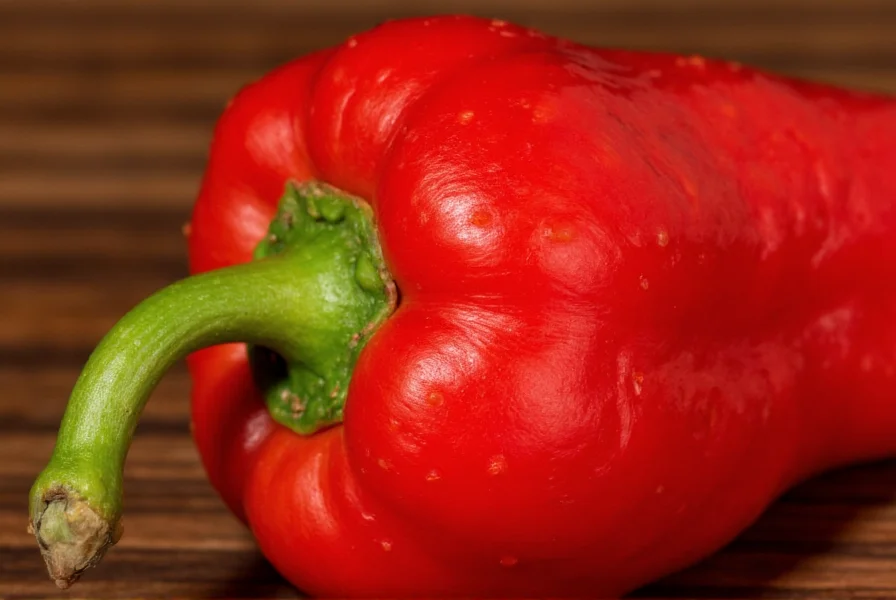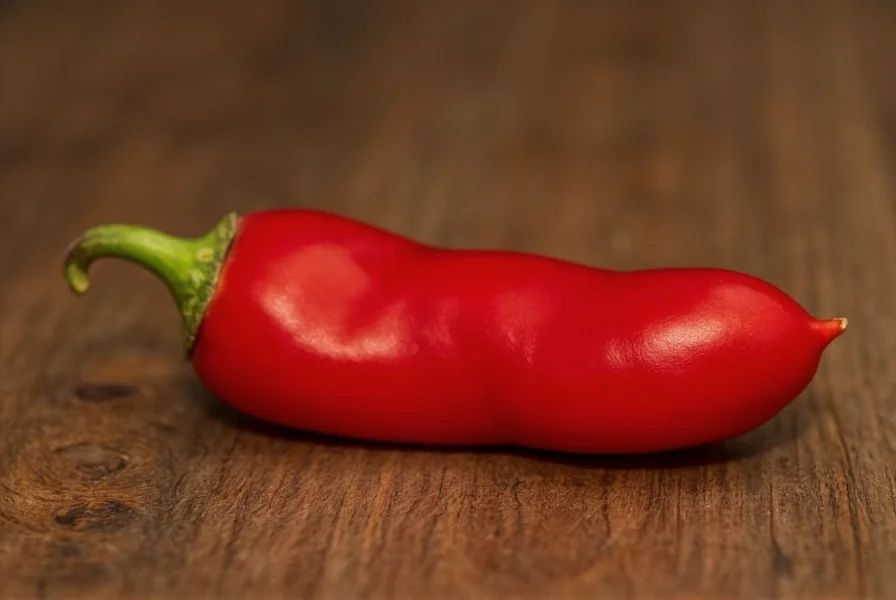When searching for what's the hottest pepper in existence, you're likely seeking definitive, scientifically verified information about extreme heat levels in chili peppers. The Carolina Reaper, developed by South Carolina breeder Ed Currie, has held the official Guinness World Record since 2013. But understanding pepper heat requires more than just a name—it demands context about measurement standards, safety considerations, and how this record compares to other superhot varieties.
Understanding Pepper Heat Measurement
The Scoville scale, developed by pharmacist Wilbur Scoville in 1912, remains the standard for measuring chili pepper heat. Originally a subjective human taste test, modern laboratories now use high-performance liquid chromatography (HPLC) to precisely measure capsaicinoid concentrations—the compounds responsible for heat—then convert these measurements to Scoville Heat Units (SHU).
For perspective on what is the hottest pepper measured in Scoville units, consider these benchmarks:
| Pepper Variety | Scoville Heat Units (SHU) | Heat Comparison |
|---|---|---|
| Carolina Reaper | 1,400,000–2,200,000 | 275× hotter than jalapeño |
| Trinidad Moruga Scorpion | 1,200,000–2,000,000 | 200× hotter than jalapeño |
| Ghost Pepper (Bhut Jolokia) | 800,000–1,041,404 | 130× hotter than jalapeño |
| Habanero | 100,000–350,000 | 15× hotter than jalapeño |
| Jalapeño | 2,500–8,000 | Baseline |
Carolina Reaper: The Record-Holding Superhot
Bred over十余年 by Ed Currie of PuckerButt Pepper Company, the Carolina Reaper is a cross between a Pakistani Naga and a Red Habanero from St. Vincent. Its distinctive red, bumpy appearance with a characteristic “tail” makes it recognizable among extremely hot pepper varieties.
The Guinness World Records officially certified the Carolina Reaper in 2013 after testing conducted by Winthrop University in South Carolina. Multiple samples were analyzed, with the average coming in at 1,641,183 SHU, though individual peppers have tested as high as 2.2 million SHU.

Safety Considerations for Handling Superhot Peppers
Understanding how hot is the hottest pepper isn't just academic—it has serious safety implications. Capsaicin concentrations in the Carolina Reaper are high enough to cause chemical burns, respiratory distress, and even temporary loss of consciousness in sensitive individuals.
Experts recommend these safety precautions when handling the world's hottest pepper varieties:
- Always wear nitrile gloves (latex won't protect against capsaicin)
- Avoid touching your face, especially eyes and nose
- Work in well-ventilated areas to prevent inhalation of capsaicin particles
- Have dairy products (milk, yogurt) nearby to neutralize capsaicin if needed
- Never use blenders or food processors without proper ventilation
The Science Behind Extreme Pepper Heat
The intense heat of peppers like the Carolina Reaper comes from capsaicinoids, particularly capsaicin and dihydrocapsaicin. These compounds trigger TRPV1 receptors in mammals—the same receptors activated by actual heat, explaining why extreme peppers create a burning sensation.
Breeding superhot peppers involves selective cross-pollination of already hot varieties, concentrating capsaicinoid production. However, there appears to be a biological limit to pepper heat—peppers hotter than approximately 2.5 million SHU may not be viable as the capsaicin concentration would prevent seed germination.
Contenders for the Hottest Pepper Title
While the Carolina Reaper maintains its official Guinness World Record status, several new varieties claim to surpass it:
- Pepper X: Developed by the same breeder as the Carolina Reaper, claims up to 3.18 million SHU (unverified by Guinness)
- Dorset Naga: British-bred variety testing around 1.8 million SHU
- 7 Pot Douglah: Another contender with verified tests exceeding 1.8 million SHU
Without official Guinness certification, these peppers remain unofficial contenders. The verification process requires multiple samples tested by an independent laboratory following strict protocols—a costly and time-consuming process that explains why many claimed “hottest peppers” never receive official recognition.
Practical Applications of Superhot Peppers
Despite their extreme heat, peppers like the Carolina Reaper have legitimate uses beyond novelty challenges:
- Medicine: Capsaicin is used in topical pain relief creams and patches
- Law enforcement: Oleoresin capsicum (OC) from superhot peppers forms the basis of pepper spray
- Pest control: Natural deterrent for mammals without harming birds or insects
- Food industry: Tiny amounts used in hot sauces and specialty foods for extreme heat enthusiasts
Responsible Consumption of the Hottest Peppers
If you're considering tasting what is currently the hottest pepper, proceed with extreme caution. Medical professionals warn that consuming superhot peppers can cause:
- Severe gastrointestinal distress
- Temporary esophageal damage
- Throat swelling and breathing difficulties
- In rare cases, thunderclap headaches requiring medical attention
Experts recommend starting with much milder peppers and gradually building tolerance rather than jumping directly to the Carolina Reaper or similar superhots. Even experienced heat seekers should never consume these peppers in competitive settings without proper medical supervision.
Frequently Asked Questions
What is the hottest pepper in the world right now?
The Carolina Reaper currently holds the Guinness World Record as the hottest pepper in the world, with an average Scoville rating of 1,641,183 SHU. Individual peppers can range from 1,400,000 to over 2,200,000 SHU.
How much hotter is the Carolina Reaper than a jalapeño?
The Carolina Reaper is approximately 275 times hotter than a jalapeño pepper. While jalapeños range from 2,500-8,000 SHU, the Carolina Reaper averages around 1.6 million SHU, with some specimens testing over 2.2 million SHU.
Can eating the world's hottest pepper be dangerous?
Yes, consuming extremely hot peppers like the Carolina Reaper can be dangerous. Potential risks include severe gastrointestinal distress, temporary esophageal damage, throat swelling, breathing difficulties, and in rare cases, thunderclap headaches requiring medical attention. Medical supervision is recommended for anyone attempting to consume these peppers.
How do you measure how hot a pepper is?
Pepper heat is measured using the Scoville scale, which quantifies the concentration of capsaicinoids (heat-producing compounds). Modern laboratories use high-performance liquid chromatography (HPLC) to precisely measure these compounds and convert the results to Scoville Heat Units (SHU), replacing the original subjective human taste test method.
Is there a limit to how hot peppers can get?
Yes, there appears to be a biological limit to pepper heat. Peppers hotter than approximately 2.5 million SHU may not be viable because the capsaicin concentration would prevent seed germination. The current record holder, the Carolina Reaper, averages around 1.6 million SHU, with verified specimens reaching up to 2.2 million SHU.











 浙公网安备
33010002000092号
浙公网安备
33010002000092号 浙B2-20120091-4
浙B2-20120091-4